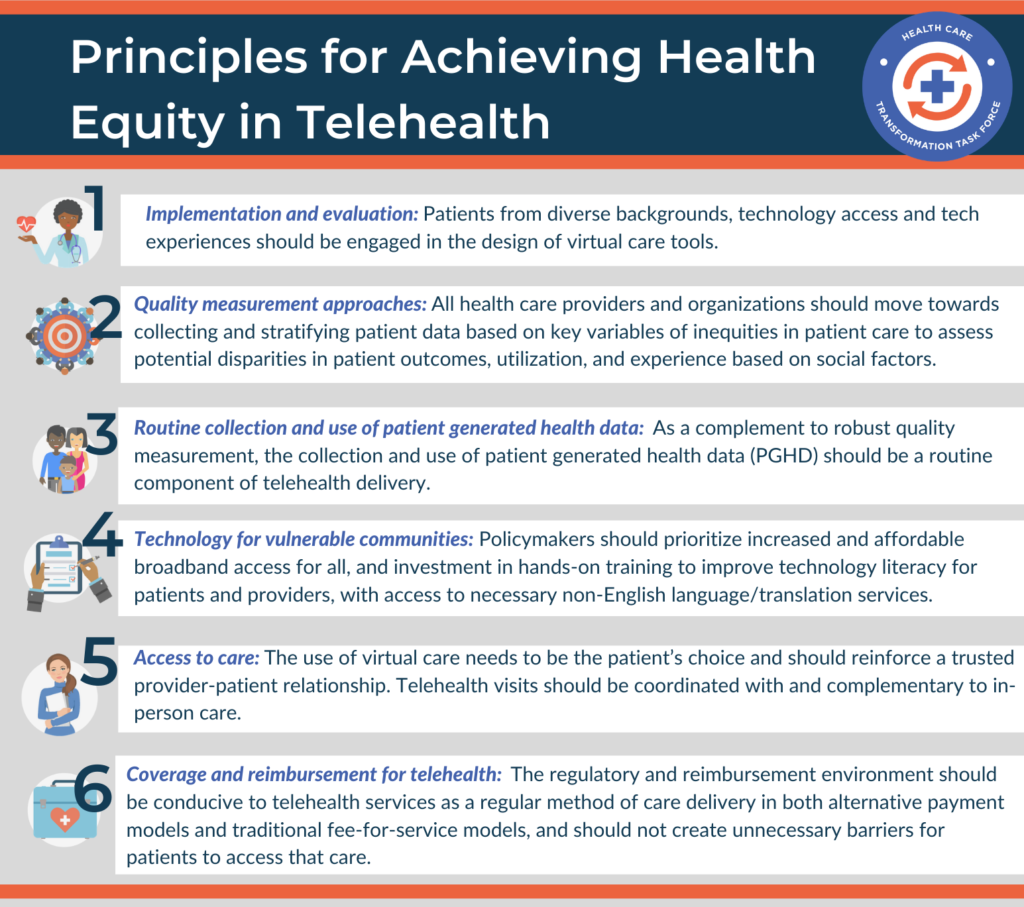15 Dec Health Equity in Telehealth
Telehealth usage exploded in response to the COVID-19 pandemic, breaking through previous barriers to telehealth adoption, either real or perceived. Medicare reported that 43.5 percent of primary care visits were provided through telehealth in April 2020; just two months prior, less than one percent of primary care visits for Medicare beneficiaries were through telehealth.
Although telehealth visits have gone down since their peak in April, rates remain higher than in previous years for both Medicare and Medicaid beneficiaries. For many providers and patients alike, the convenience of telehealth is welcome, and the hope is that payers will continue broader coverage of telehealth services after the pandemic.
The Health Care Transformation Task Force recognizes the transformative potential of telehealth as a tool to make care more accessible. The following set of principles – developed by the Task Force’s Patient-Centered Priorities Work Group – outlines how to align telehealth with current standards for patient-centered, value-based care.

The COVID-19 pandemic has forced providers to innovate in many ways. With the combination of an uptick in demand for virtual care and health systems investing in necessary infrastructure to support telehealth deployment, now is time for the industry to move forward with incorporating broad-based telehealth as a permanent complement to traditional, in-person health care. Patient care will be better off as a result.
Read the Commentary
